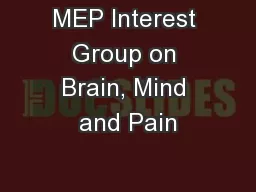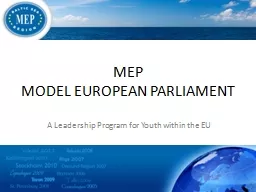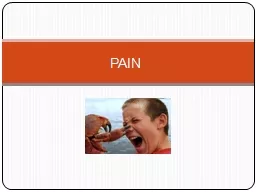PPT-MEP Interest Group on Brain, Mind and Pain
Author : jane-oiler | Published Date : 2017-08-21
Aims to Encourage research into and access to innovative treatments promote prevention and selfmanagement approaches decrease stigma and work together to improve
Presentation Embed Code
Download Presentation
Download Presentation The PPT/PDF document "MEP Interest Group on Brain, Mind and Pa..." is the property of its rightful owner. Permission is granted to download and print the materials on this website for personal, non-commercial use only, and to display it on your personal computer provided you do not modify the materials and that you retain all copyright notices contained in the materials. By downloading content from our website, you accept the terms of this agreement.
MEP Interest Group on Brain, Mind and Pain: Transcript
Download Rules Of Document
"MEP Interest Group on Brain, Mind and Pain"The content belongs to its owner. You may download and print it for personal use, without modification, and keep all copyright notices. By downloading, you agree to these terms.
Related Documents














